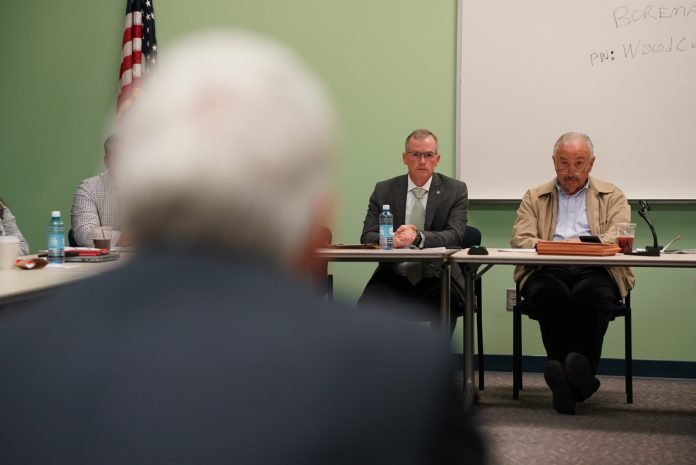The Legislature’s Joint Standing Committee on Finance met Monday morning at the Donald F. Black Courthouse Annex for the second day of September legislative interim meetings in Parkersburg.
The focal point of the meeting was continued (from August interims two weeks ago) questioning of West Virginia Department of Human Services officials regarding where state and federal funding for child care subsidies comes from, as well as the seeming lack of progress in attempting to combat the state’s substance use disorder crisis.
Senate Finance Committee Chairman Eric Tarr (R-Putnam) asked Cynthia Persily, the cabinet secretary for the Department of Human Services, exactly how the state funds the Child Care Assistance program through the Bureau for Family Assistance. The program provides financial assistance to working parents or parents attending public colleges to subsidize the cost of family-based child care or licensed center-based child care for families that meet income requirements.
Persily explained that the Child Care Assistance program receives its funding though the child care development fund made up of state dollars and a line of child care maintenance from federal funding. The program is also receiving funding through two federal funding block grants and TANF surplus dollars according to Persily.
Persily informed members that the Child Care Assistance Program receives just over $124 annually, with over $116 million coming from federal dollars and $7.9 million in state funding.
Delegate Matthew Rohrbach (R-Cabell) asked Persily about state funding to combat the substance use disorder crisis in West Virginia, and the state’s apparent lack of return on investment.
Two weeks ago, the Joint Standing Committee on Health received a bleak report from Jeremiah Samples, a senior adviser to the Legislature, regarding West Virginia’s drug use statistics and policies.
Citing statistics from the U.S. Centers for Disease Control and Prevention, Samples informed members that overdose deaths in West Virginia between 2017 and 2022 increased by more than 55 percent, overdose deaths between 2010 and 2022 increased by 135 percent, and overdose deaths between 1999 and 2022 increased by 1,690 percent.
Rohrbach mentioned Monday that state spending on the West Virginia substance use disorder waiver — which helps pay for prevention and treatment services — was $13 million in fiscal year 2019, growing to $160 million in fiscal year 2024. He wondered how state spending could increases by more than ten times in five years as overdose deaths continue to skyrocket?
Persily said that looking at substance use disorder treatment with only overdoses as a measurement of success fails to produce a true reflection of the good work that is being done. She said other measures to consider include seven-day and 30-day follow-ups with those who complete rehabilitation and connecting individuals with housing and employment.
“We are not just looking at overdoses as the end result of SUD treatment, because quite frankly people who are in treatment are less likely to have overdoses than people who are not in treatment,” Persily said.
She also reminded lawmakers of a law they passed earlier this year, requiring automatic enrollment of the substance use disorder population into managed care programs. The bill requires DoHS to develop performance-based outcome measures for state-funded substance use disorder programs.
Persily said the DohS proposed those measures and she believes those managed care programs are indicators of success nationally in the fight against substance use disorder.

